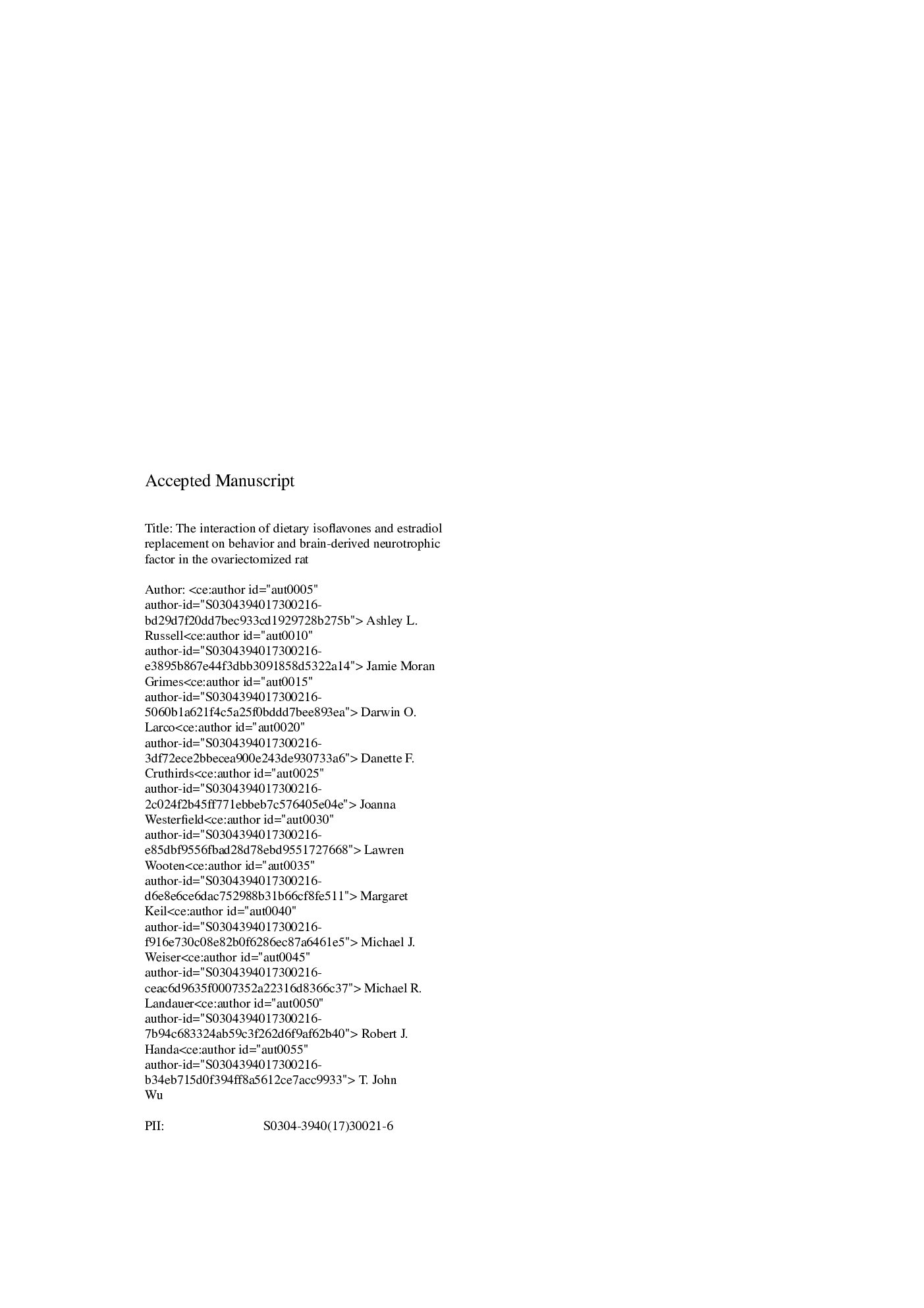| کد مقاله | کد نشریه | سال انتشار | مقاله انگلیسی | نسخه تمام متن |
|---|---|---|---|---|
| 5738818 | 1615059 | 2017 | 27 صفحه PDF | دانلود رایگان |
عنوان انگلیسی مقاله ISI
The interaction of dietary isoflavones and estradiol replacement on behavior and brain-derived neurotrophic factor in the ovariectomized rat
ترجمه فارسی عنوان
اثر متقابل ایزوفلاوونهای غذایی و جایگزینی استرادیول در رفتار و فاکتور نوروتروفیک مغز در موش صحرایی تخمدان
دانلود مقاله + سفارش ترجمه
دانلود مقاله ISI انگلیسی
رایگان برای ایرانیان
کلمات کلیدی
موضوعات مرتبط
علوم زیستی و بیوفناوری
علم عصب شناسی
علوم اعصاب (عمومی)
چکیده انگلیسی
Phytoestrogens are plant derived, non-steroidal compounds naturally found in rodent chows that potentially have endocrine-disrupting effects. Isoflavones, the most common phytoestrogens, have a similar structure and molecular weight to 17β-estradiol (E2) and have the ability to bind and activate both isoforms of the estrogen receptor (ER). Most isoflavones have a higher affinity for ERβ, which is involved in sexually dimorphic behavioral regulation. The goal of this study was to examine the interaction of isoflavones and E2 presence in the OVX rat on anxiety- and depressive- like behavior and the related BDNF pathophysiology. E2 administration resulted in anxiogenic behaviors when isoflavones were present in the diet (p < 0.05), but anxiolytic behaviors when isoflavones were not present (p < 0.05). E2 resulted in antidepressive-like behaviors in animals fed an isoflavone-rich diet (p < 0.05), with no effect when isoflavones were removed. Increased hippocampal BDNF expression was observed in animals fed an isoflavone-rich diet after E2 administration (p < 0.05). BDNF expression in the amygdala and hypothalamus was increased after E2 treatment in animals fed an isoflavone-rich diet. Overall, these results demonstrate that the presence of dietary isoflavones can differentially regulate the effect of E2 replacement on behavior and BDNF expression.
ناشر
Database: Elsevier - ScienceDirect (ساینس دایرکت)
Journal: Neuroscience Letters - Volume 640, 15 February 2017, Pages 53-59
Journal: Neuroscience Letters - Volume 640, 15 February 2017, Pages 53-59
نویسندگان
Ashley L. Russell, Jamie Moran Grimes, Darwin O. Larco, Danette F. Cruthirds, Joanna Westerfield, Lawren Wooten, Margaret Keil, Michael J. Weiser, Michael R. Landauer, Robert J. Handa, T. John Wu,
